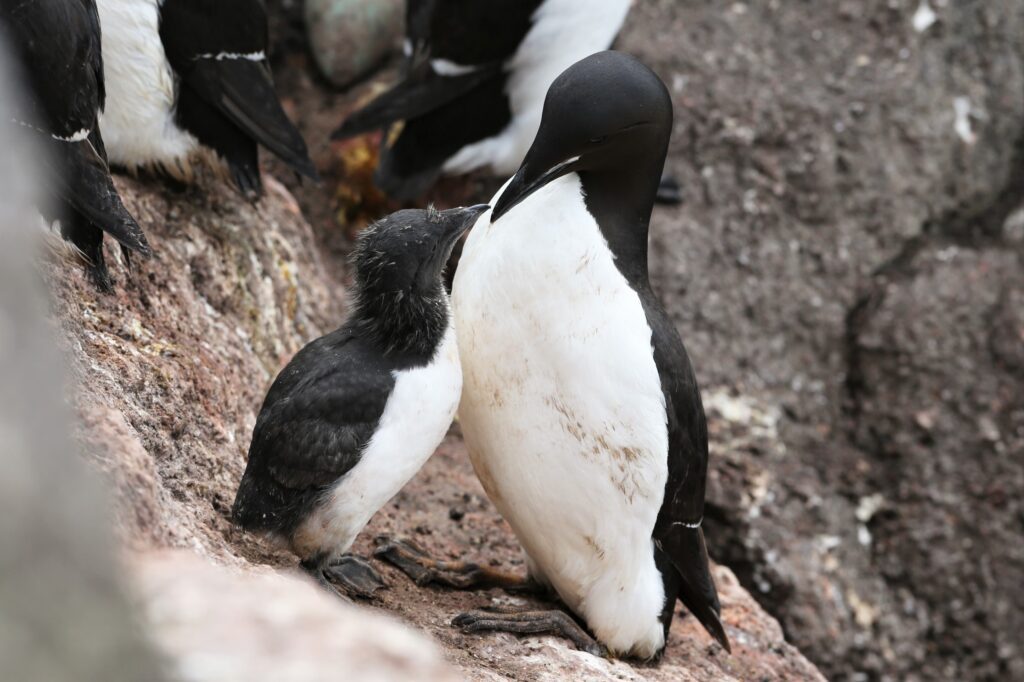Variation in Brünnich’s guillemot population trends explained in recent study
For species of management concern, successful management relies on understanding current vital rates. An international group of researchers has collated and analysed recent available data on adult survival and reproductive output of Brünnich’s guillemots from colonies throughout the Atlantic range of the species to investigate and explain any spatial variation in demography and population trends.
Stable populations in the west – decreasing in the east
Many Brünnich’s guillemot populations in the Atlantic Arctic are declining rapidly, particularly those in Svalbard, Iceland and a large part of Greenland. At the same time, populations breeding in Canada and northwest Greenland seem to be stable. Among the potential drivers of the declines are a climate-driven deterioration of winter food supply, mercury pollution and direct anthropogenic mortality due to hunting and oil pollution. However, knowledge about the relative roles of the different causes of decline are still lacking, and there is a need to understand why large-scale variations in population trends are being observed.
Vital rates – population trends, breeding success and survival
Information on vital rates of Brünnich’s guillemots has until recently been limited to a few long-term studies, but thanks to recent expansions of seabird monitoring efforts in Greenland, Iceland and Arctic parts of Norway, a broader picture of demographic variation is now available. For this study, the researchers used data on population size, breeding success and adult survival of Brünnich’s guillemots from several colonies in Canada, Greenland, Iceland and Norway, which were divided into three study regions. After modelling stochastically the growth rate of each regional population, the researchers compared their predictions to the observed regional population trends, aiming to identify mechanisms causing variation in demography and population trends between regions.
Highlighting the survival of pre-breeders
The analyses revealed large variations in breeding success, while adult survival was average or high in all colonies during the 2010s. Since observed population growth rates were lower than modelled growth rates for most colonies, the results suggested that the survival rates of fledged Brünnich’s guillemot chicks up to their return to the colony to breed were lower than assumed. Alternatively, the proportions of adults that skip breeding for a shorter or longer period of time were larger than assumed. According to the authors of the article, low pre-breeding survival might be linked to poor feeding conditions in the autumn and winter, and their findings highlight the role of pre-breeding survival as a factor regulating seabird populations.
Read the article:
Contact person: Hallvard Strøm, Norwegian Polar Institute
